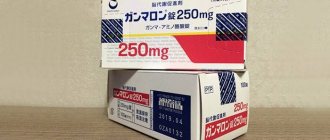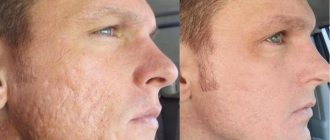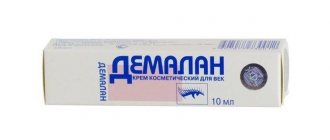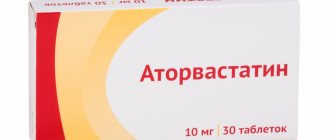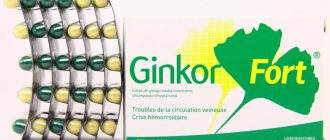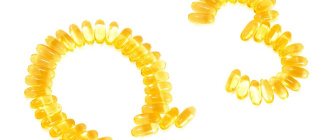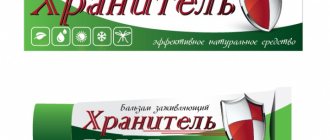- February 8, 2020
- dietary supplement
- Valeria Epimakhova
Everyone knows that women carrying a child and breastfeeding need an additional source of vitamins. This is beneficial not only for the mother, but also for the baby. Often Omega Mom vitamins are prescribed to women who are just planning a pregnancy, so that a healthy child is conceived, and from the very first days of birth in the mother’s womb, he does not need useful microelements.
Indications and dosage
The instructions for use of Omega Mom say that the drug can be prescribed to women who are planning to conceive a child, pregnant women and mothers who are breastfeeding.
Regardless of the indications, the drug is taken in the prescribed dosage: 1 capsule 2 times a day with meals. If you use the capsule before or after a meal, its contents will be less absorbed and will bring less benefit.
Pharmacology
Despite the fact that Omegamama is not a drug, but belongs to the group of dietary supplements, you should not use the drug yourself. Before use, it is better to consult with your doctor who will be treating or is already treating a pregnant woman. Of course, the drug will not cause much harm, but an excess of the substance in a woman’s body is also undesirable.
Compound
Omega Mama contains the following components:
- Fish oil MEG-3 - 0.5 g.
- Gelatin is a substance that helps in capsule formation.
- Glycerin (component that retains moisture).
- E171, E172, (dyes).
The calculation is made for one capsule. If this is not enough for a woman - this is what the test results say, which reveal the amount of omega-3 in the body - then the dose is increased or the drug is changed, replaced with an analogue with a higher content of the active substance.
"Omegamama 9 months" does not include GMO products.
The energy value of 1 capsule is: 21.40 kJ, or 5.19 kcal
The nutritional value of 1 capsule is calculated as follows: proteins - 0%, carbohydrates - 0%, fats - 100% (contain 4.51 kcal).
The content of docosahexaenoic acid in the daily dose is 32.9%.
What should you pay attention to when choosing the right Omega?
Raw material quality
There are two types of fish raw materials: from the back (carcass) of fish (Fish body oil) or from fish liver (Fish liver oil). It is not recommended to choose fish liver oil as a raw material, since toxic substances can accumulate in the liver that cannot be completely removed by filtration.
Compound
- The percentage of EPA/DHA should be at least 60%.
- The quantitative ratio of EPA/DHA acids is also important; 2:1 is considered the most effective.
- According to WHO recommendations, the daily requirement for Omega-3 is from 500 to 1000 mg.
Presented form
Manufacturers produce Omega-3-based drugs in three forms:
- Natural triglycerides
are the form that occurs in nature. In our body it undergoes complete and rapid metabolism, that is, it is completely absorbed. The concentration of Omega-3 in them is small, and such fractions do not undergo a thorough degree of purification to remove heavy metal impurities. Omega-3 in liquid form is always, as a rule, represented by triglycerides. TG marking. - Ethyl esters
are a synthesized substance, the result of industrial processing of fish oil with ethyl alcohol in order to obtain a high concentration of Omega-3 in it and remove toxins. This form is safer than TG, but is less absorbed. Marking EE, ethyl esters. - Reesterified triglycerides
. This form is resistant to oxidation. The processed raw materials are quickly digested and retain up to 90% of fatty acids. rTG marking - Phospholipids
. This is by far the most expensive form obtained from krill oil. It has the highest concentration of Omega-3, is quickly metabolized and is almost completely absorbed. Another significant advantage of this form is its content of astaxanthins, powerful antioxidants. Safe for pregnant women, as shellfish do not accumulate mercury. Ph marking
Omega 3-6-9 Super, 45 capsules, Evalar
750 ₽
Dietary supplement NOT A MEDICINE
Degree of purification
Fish tend to accumulate heavy metals in their bodies, and the larger the fish, the more toxins it contains. The pharmaceutical industry has GMP and GOED quality and safety standards that guarantee a high degree of purification.
Method of action
“Omegamama 9 months” saturates the body of mother and baby with useful microelements throughout the entire course of treatment, allowing the woman to maintain health throughout pregnancy and after the birth of the child.
The drug contains a complex of useful substances, the combination of which was developed by a number of scientists from Switzerland and Russia. "Omegamama" is a unique form of fish oil MEG-3 - company / DSM Nutritional Products (Switzerland) with a unique patented technology that can provide high levels of DHA content, while there are no third-party components.
Only deep-sea fish from the Pacific Ocean were used to create the formula, which guarantees the quality of the product.
Docosahexaenoic acid is a polyunsaturated omega-3 fatty acid, which is essential for human functioning, health and quality of life, but is not produced by the body itself. Omega-3 is an essential component that participates in the structural cells of phospholipids and lipoproteins. Omega-3 also promotes the formation of cell membranes, connective tissues and myelin sheaths, which, in turn, affect the normal development of the brain and reproductive system, and have a positive effect on the nervous system. Therefore, by taking the complex, the mother can be calm about the development of her child.
It is important to take the drug when planning pregnancy, because omega-3 helps normalize the functioning of a woman’s reproductive system.
Acid deficiency during the development of a child in the womb can lead to abnormalities in the development of the nervous system and visual organs. It is especially important to take the drug in the last trimester of pregnancy, when the baby’s brain and optic nerves are actively developing. DHA penetrates to the baby through the placenta, and during breastfeeding - through milk, which allows the brain to develop properly.
A lack of omega-3 in the body can lead to postpartum depression, which women are prone to in the first months after the birth of a child. Unsaturated fatty acids help regulate serotonin, a chemical transmitter of impulses between cells, which allows women to be in a good mood more often.
Fish oil 500 mg Omega-3 capsules No. 60
Product description
The pharmacological properties of the drug Omega-3 Fish Oil are determined by the presence of a complex of biologically active substances: the amount of saturated and unsaturated fatty acids of the Omega-3 family (eicosapentaenoic acid) - not less than 5.4 mg per capsule, retinol (vitamin A) - 45 -112.5 IU per capsule and cholecalciferol (vitamin D) - 9-45 IU per capsule. Polyunsaturated fatty acids of the omega-3 class help change the fluid properties of cell membranes and increase the functional activity of membrane receptors, which improves the lipid-cellular interaction of lipoproteins with enzymes and the metabolism of lipoproteins. The increase in high-density lipoproteins after taking Omega-3 Fish Oil is very small and not permanent. It is significantly less than after taking fibrates. The antiplatelet effect of the drug is associated with changes under its influence in the composition of lipids of cell membranes, incl. membranes of erythrocytes, a decrease in the content of arachidonic acid in them and an increase in the level of eicosapentaenoic acid. As a result, there is a decrease in the synthesis of thromboxane A2 and other diunsaturated eicosanoids (arachidonic acid derivatives), which enhance platelet aggregation, and an increase in the synthesis of thromboxane A3 and other triunsaturated eicosanoids from eicosapentaenoic acid that do not have a proaggregant effect. No significant changes in other blood coagulation factors were observed. Vitamin A is a fat-soluble vitamin, plays an important role in redox processes, and is involved in the synthesis of mucopolysaccharides, proteins, and lipids. Participates in the formation of visual pigments necessary for normal twilight and color vision; ensures the integrity of epithelial tissues, regulates bone growth. Vitamin D stimulates the absorption of calcium and phosphorus in the intestines, the reabsorption of calcium and phosphorus in the kidneys, the transport of calcium through cell membranes, and regulates the process of building bone structure. It also affects the functioning of the immune system, cell proliferation and differentiation, the synthesis of lipids and a number of hormones, the functional activity of the cardiovascular system and gastrointestinal tract, and reduces the level of parathyroid hormone in the blood. It is necessary for the normal functioning of the parathyroid glands and takes part in the synthesis of ATP.
Pharmacokinetics
Omega-3 fatty acids During and after the absorption of omega-3 fatty acids, metabolism occurs in three ways: - fatty acids are first delivered to the liver, where they are included in various categories of lipoproteins and sent to peripheral lipid stores; — phospholipids of cell membranes are replaced by phospholipids of lipoproteins, after which fatty acids can act as precursors of various eicosanoids; - Most fatty acids are oxidized to meet energy needs. The concentration of eicosapentaenoic and docosahexaenoic acids in blood plasma phospholipids corresponds to the concentration of these fatty acids included in cell membranes. Retinol (Vitamin A) Retinol is absorbed from the gastrointestinal tract (mainly the duodenum and jejunum) after emulsification with bile acids. Retinol entering the intestinal microvilli undergoes esterification. The resulting retinyl palmitate binds to specific lipoproteins, penetrates the lymphatic pathways as part of chylomicrons and enters the liver, where it is captured by stellate reticuloendotheliocytes, and then by hepatocytes, where chylomicrons are broken down, releasing retinyl palmitate, retinol and retinal and the retinoic acid formed from it. Retinol binds to a specific protein, enters the blood, combines with albumin and is transported to various organs. Retinol is distributed unevenly in the body: the largest amount is in the liver and retina, the smaller amount is in the kidneys, heart, lungs, lactating mammary gland, and adrenal glands. Retinol is deposited in the form of retinol palmitate, its reserves are slowly but constantly renewed. In tissues, retinol is localized mainly in the microsomal fraction, mitochondria, lysosomes, and in the membranes of cells and organelles. Retinol binds to glucuronic acid: β-glucuronate undergoes hepatic circulation and oxidation to retinal and retinoic acid. Retinoic acid undergoes decarboxylation and binds to glucuronic acid, subsequently excreted in bile and feces. The half-life of retinol is very long and is measured from several weeks to several months. Retinoic acid and other water-soluble metabolites are also excreted in urine and feces. Cholecalciferol (vitamin D) Vitamin D absorption occurs in the proximal small intestine, necessarily in the presence of bile. Part of vitamin D is absorbed in the middle parts of the small intestine and a small part in the ileum. After absorption, cholecalciferol is found in chylomicrons in free form and only partially in ester form. In the blood, most of it is bound to gamma globulins and albumins. Vitamin D accumulates in large quantities in the bones, and in smaller quantities in the liver, muscles, blood, and small intestines, and is stored especially long in adipose tissue. Passes into breast milk in small quantities. The main processes of vitamin D biotransformation occur in the skin, liver and kidneys. In the skin, under the influence of ultraviolet irradiation, vitamin D3 is formed from precursors. In the liver, vitamin D is hydroxylated and converted into 25-hydroxycholecalciferol (25-OH-D3). The latter in the kidneys, with the participation of parathyroid hormone, is converted into the most active metabolite of vitamin D - calcitriol, or 1,25-dihydroxycholecalciferol (1,25(OH)2-D3). The half-life of vitamin D from the body is about 19 days. It is excreted through bile excretion, initially into the intestine (15-30% of the administered dose during the day), where it undergoes enterohepatic circulation (reabsorption). The remaining part is excreted in the feces.
Recommendations for use
Take 1-3 capsules orally 3 times a day after meals with cold or lukewarm water. It is recommended to swallow the capsules immediately with plenty of water; you should not keep them in your mouth for a long time, because The gelatin contained in the shell may make the capsule sticky, making subsequent swallowing difficult. The course of application is at least 1 month. The single dose and duration of taking the drug are determined by the doctor.
Warning
Due to a moderate increase in bleeding time (when taking high doses), monitoring of patients undergoing anticoagulant therapy is required, and, if necessary, appropriate adjustment of the dose of the anticoagulant. For endogenous hypertriglyceridemia, the drug is taken in addition to medical nutrition only if dietary measures are insufficient to achieve the required effect. For secondary endogenous hypertriglyceridemia (especially in uncontrolled diabetes), experience with the drug is limited. There is no clinical experience regarding the treatment of hypertriglyceridemia in combination with fibrates. Prescribed with caution for injuries and surgical operations (due to the risk of increased bleeding time), and for elderly patients (over 70 years old). It is not recommended to use it together with multivitamin complexes and other drugs containing vitamins A and D. During the period of taking the drug, it is recommended to reduce the content of vegetable oil in the daily diet by 10-20 g. When taking the drug, a moderate increase in the activity of “liver” transaminases is possible. In patients with impaired liver function (especially when taking high doses), regular monitoring of liver function (AST and ALT) is necessary. There is no information on the use of the drug in children and elderly patients over 70 years of age.
Contraindications
- exogenous hypertriglyceridemia (hyperchylomicronemia) (type I according to the Fredrickson classification); - exacerbation of chronic cholecystitis, pancreatitis, diseases of the hepatobiliary system; - cholelithiasis; - hemorrhagic syndrome; - idiopathic hypercalcemia; - hypercalciuria; — active forms of pulmonary tuberculosis; — acute and chronic diseases of the liver and/or kidneys; - urolithiasis disease; - chronic pancreatitis; — hypervitaminosis A and D; - sarcoidosis and other granulomatosis; - long-term immobilization (large doses); - thyrotoxicosis; — pregnancy and lactation; - children under 18 years of age; - hypersensitivity to the components of the drug.
Buy Fish oil 500 mg Omega-3, dietary supplement cap. No. 60 in the pharmacy
Price for Fish oil 500 mg Omega-3, dietary supplement cap. No. 60
Instructions for use for Fish oil 500 mg Omega-3, dietary supplement cap. No. 60
Reviews
Reviews about the dietary supplement are positive. The line is popular among expectant mothers and nursing women; gynecologists often prescribe the drug to their patients. This is due to the relatively low cost of the drug and the absence of side effects. However, when compared with similar drugs that contain fish oil, the price of Omegamama may be higher. This is due to the way the capsules are created. As the girls who use the dietary supplement note, it has a high level of processing. Some women even conduct unique studies and note that cheaper “brothers” in composition are often contraindicated during pregnancy and lactation, although fish oil is necessary for the female body during these periods. This is an indicator of low quality of the product, unlike Omegamama.
It is noted that taking Omegamama allows a woman to bear a healthy child. And the girl herself is less likely to become depressed in the last stages of pregnancy and after the birth of the child. The complex has a positive effect on the functioning of the reproductive system and stabilizes the production of hormones, which makes a woman more balanced and happy.
There are cases described when the drug was not absorbed by the body, so it had to be replaced with an analogue.
Analogs
Of course, the instructions for use of Omega Moms do not say that the supplement has analogues. Sometimes there is a need to replace the drug prescribed by the doctor with another. Analogs of “Omega Mom” contain omega-3, this component is the active ingredient of the products listed below. They differ in manufacturers, pricing policies and auxiliary elements.
- "Triple Omega-3" from, which is known for the production of dietary supplements. One package contains 30 capsules, which include 1.3 g of active substance. You should take only 1 capsule per day. Fat is taken from fish species such as sardines, mackerel, etc.
- "ZdravCity Omega-3". Significantly lower in cost than Omegamama or dietary supplements from Evalar, but it will bring less benefits. You should drink 2 capsules 2 times a day during meals so that the component is absorbed faster and in full. Ocean fish oil is used to create capsules.
- "Vitateca Omega-3". The raw materials go through several stages of purification, so they are safe for use. The composition includes Icelandic fat LYSI, which has undergone a process of additional concentration of omega-3 acids up to 90%. The drug can be used even in childhood, which indicates its safety and quality.
- Norwegian Fish Oil. The most expensive analogue. This is due to the fact that one package contains more than 100 capsules. The drug is made from shark liver oil, which also increases the price of the product. It is not recommended to take the supplement for more than 1 month. This is enough to prepare the body for pregnancy, but the drug cannot be used during pregnancy and breastfeeding.
- And others.
A woman must choose for herself which drug to use: “Omega Mama” or an analogue. But it’s still better to listen to the opinions of doctors and the positive reviews that remain after using Omegamama. The dietary supplement will help to bear a healthy baby and maintain the mother’s immunity.
Review of popular Omega manufacturing companies
Let's take a closer look today at the most popular producers of polyunsaturated fatty acids and find out whether any Omega allows you to compensate for the required daily dose.
Triple Omega-3, 950 mg, 30 capsules, Evalar
- Dietary supplement from a popular Russian brand that has proven itself in the pharmaceutical market for more than 25 years.
- High content of Omega-3 in one capsule: EPA no less than 550 mg (92%), DHA no less than 230 mg (33%), PUFA 950 mg (48%).
- The raw materials used are highly purified fish oil from sardines, mackerel and anchovies from BASF, a world-famous supplier (Germany, Norway).
- Additional components: vitamin E (a mixture of natural tocopherols).
- The capsule shell is made of gelatin and glycerin.
- There are no contraindications for use by pregnant and lactating women.
- Low Omega-3 content - only 300 mg: EPA - 180 mg and DHA - 120 mg + fish oil concentrate.
- Raw materials used: fish oil obtained from the whole body of mackerel, anchovies and sardines.
- Additional components: vitamin E (tocopherol acetate), soy derivatives.
- Use during pregnancy or lactation is permissible only after consultation with your doctor.
| PROS: | MINUSES: |
| Does not have a pungent odor More than 2 times cheaper than analogues. | Large capsule size |
Triple Omega-3 950 mg, EPA and DCG, 30 capsules, Evalar
868 ₽
Dietary supplement NOT A MEDICINE
Omega-3, 1400 mg 100 capsules, NOW
| PROS: | MINUSES: |
| Gelatin capsules with enteric coating (enteric-soluble), which avoid a fishy aftertaste. | Low Omega-3 content per capsule |
Norwegian cod liver oil, 100 capsules, Solgar
799 ₽
Dietary supplement NOT A MEDICINE
- Premium dietary supplement from an American manufacturer.
- High Omega-3 content per capsule: EPA 504 mg, DHA 378 mg + marine fish oil concentrate.
- Raw materials used: muscle tissue of small fish species (anchovies, sardines, mackerel).
- Additional components: vitamin E (a mixture of natural tocopherols).
- The capsule shell is made of gelatin and glycerin.
- Use during pregnancy or lactation is permissible only after consultation with your doctor.
- Composition: Omega-3 PUFA 980 g, the manufacturer does not indicate which fatty acids Omega-3 is represented by and their percentage. Also, it is not in the instructions, not on the company’s official website, it does not indicate what raw materials the manufacturer uses.
Triple Omega-3, 50 capsules, Solgar
| PROS: | MINUSES: |
| No pungent odor Shelf life - 3 years | High price Large capsule size Glass, impractical packaging |
Omega-3, 1400 mg/ 980 mg, 30 capsules, Nature's Bounty
| PROS: | MINUSES: |
| No specific smell or aftertaste. | There is no exact composition, % ratio of fatty acids Glass, impractical packaging There are no instructions for use during pregnancy and lactation. |
Omega-3, 980 mg, 30 capsules, Nature's Bounty
1 763 ₽
Dietary supplement NOT A MEDICINE
- Quite low Omega-3 content - 260 mg: EPA -160 mg and DHA - 100 mg + saturated fatty acids - 0.3 g, monounsaturated fatty acids - 0.2 g, polyunsaturated fatty acids - 0.4 g.
- Fish oil 69.4%
- The manufacturer did not indicate in the available sources what raw materials were used.
- Additional components: vitamin E (tocopherol extract).
- Contraindicated for pregnant and lactating women.
Fish oil, 60 capsules, VPLab
| PROS: | MINUSES: |
| No specific smell or aftertaste. | Low content of Omega-3 fatty acids No indication of raw materials used |
